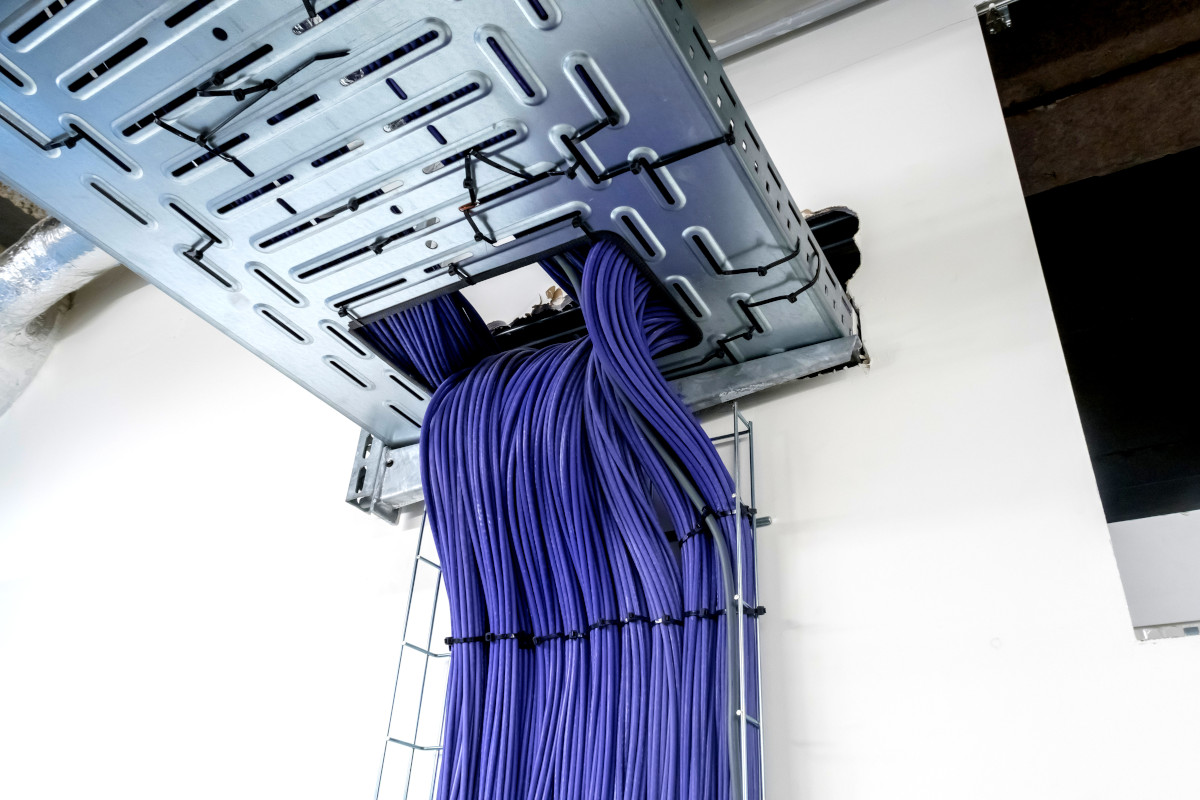What are the Benefits of Structured Cabling Systems?
January 2nd, 2024 by admin

Chaos, confusion, and cords – they come in threes. Your business's digital life needs structure and what better way to organize it than tapping into the benefits offered by structured cabling systems?
Structured cabling ensures that your data flows smoothly from point A to point B without any hiccups.
Now, you are probably wondering, “Why not just go wireless?” Ah, the age-old debate of wired vs. wireless. While the latter has its perks, structured cabling brings a level of reliability and stability that wireless can only dream of.
So, without further ado, let's dive into the benefits of structure cabling. But first, here's a brief explanation of this system:
What Is Structured Cabling?
The best word to describe structured cabling in layman's terms is “organization.” As the name says, it's an organized way to set up cabling infrastructure. It supports the transmission of data, voice, and video signals within a building.
The primary goal of structured cabling is to create an easily manageable and flexible network that accommodates various technologies and communication. Unlike point-to-point cabling systems, where each device is connected directly to another, structured cabling employs a hierarchical approach. This makes it easier to troubleshoot issues, make changes, and upgrade the network as technology evolves.
When it comes to connecting devices, the infrastructure uses patch cables, which are pre-terminated, short cables that run from the patch panels directly to the end-user equipment.
Benefits of Structure Cabling
Future-Proof Your Network
In today's fast-paced technological world, adaptability is key. Structure cabling sets the stage for future upgrades and expansions. From adding new devices to upgrading your network speed, organization makes it easier and more cost-effective to make these changes. Simply plug in and continue with your routine business operations.
Efficient Data Transmission
Structured cabling supports high-speed data transmission, making it ideal for modern business requirements. The use of fiber optics and twisted pair cables ensures data is transmitted at high speeds with minimal signal degradation. This efficiency is essential for applications such as large file transfers, video conferencing, and other bandwidth-intensive tasks.
Enhanced Security
Wireless networks face physical obstacles and interference from other electronic devices, impacting signal quality. The organized and standardized setup minimizes the risk of downtime due to cable issues. As for security concerns, since the infrastructure is in-house, there's no need for data encryption. However, authentication measures should be set in place to prevent unauthorized access to the server room.
Less Downtime
With a structured cabling system in place, it becomes simpler to identify and rectify issues promptly. This organized infrastructure minimizes the time required to trace and resolve connectivity problems, reducing downtime significantly.
Offers VoIP Integration
Structured cabling provides the foundation for the integration of VoIP into a company's communication infrastructure. It ensures there is sufficient bandwidth to handle the data traffic generated by VoIP calls. This is achieved through the use of high-quality cables and proper network design. Moreover, it allows for easy scalability by providing a modular and flexible infrastructure that can adapt to changing needs.
A Cost-Effective Solution
Selecting the appropriate cable material is crucial for both cost-effectiveness and performance. While fiber optic cables offer high bandwidth and are suitable for long distances, copper cables are great for shorter connections. Consider your requirements and choose the cable type that aligns with your budget without compromising performance.
Energy-efficient switches, routers, and other networking devices not only contribute to cost savings in the long run but also align with sustainability goals. Additionally, consider implementing Power over Ethernet (PoE) technology to power devices like IP cameras and phones over the same Ethernet cables used for data transfer.
Easy to Manage
In structured cabling, all network components are connected to a central point, usually a server room. This facilitates easier management and monitoring of the entire network. IT administrators can access and control the network more effectively, reducing the time and effort required for routine maintenance and troubleshooting.
Who said tech can't be stylish? Structured cabling not only improves functionality but also adds a touch of aesthetic appeal. Your office space transforms from a cable jungle to a clean, organized haven. Structured cabling isn't just about looks – it's about optimizing your network for peak performance. With carefully organized and labeled cables, the days of accidentally unplugging the wrong cord are over. This not only saves time but also minimizes the risk of costly errors and downtime.
Quality doesn't have to break the bank. Convergence Solutions offers cost-effective cabling services without compromising on excellence. Let's discuss your needs and design a cabling infrastructure that propels your business forward.
If you want to learn more about Structured Cabling Systems, contact us today.
Posted in: Services

